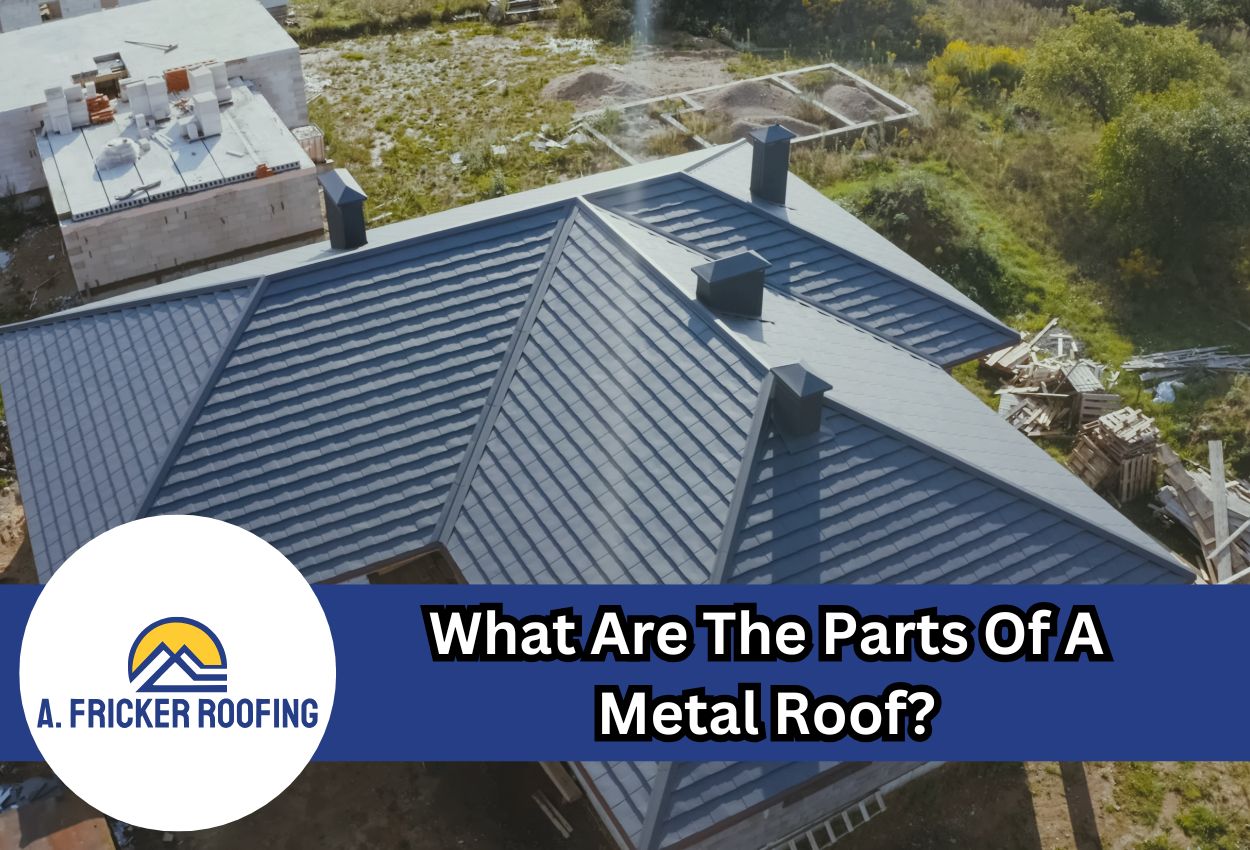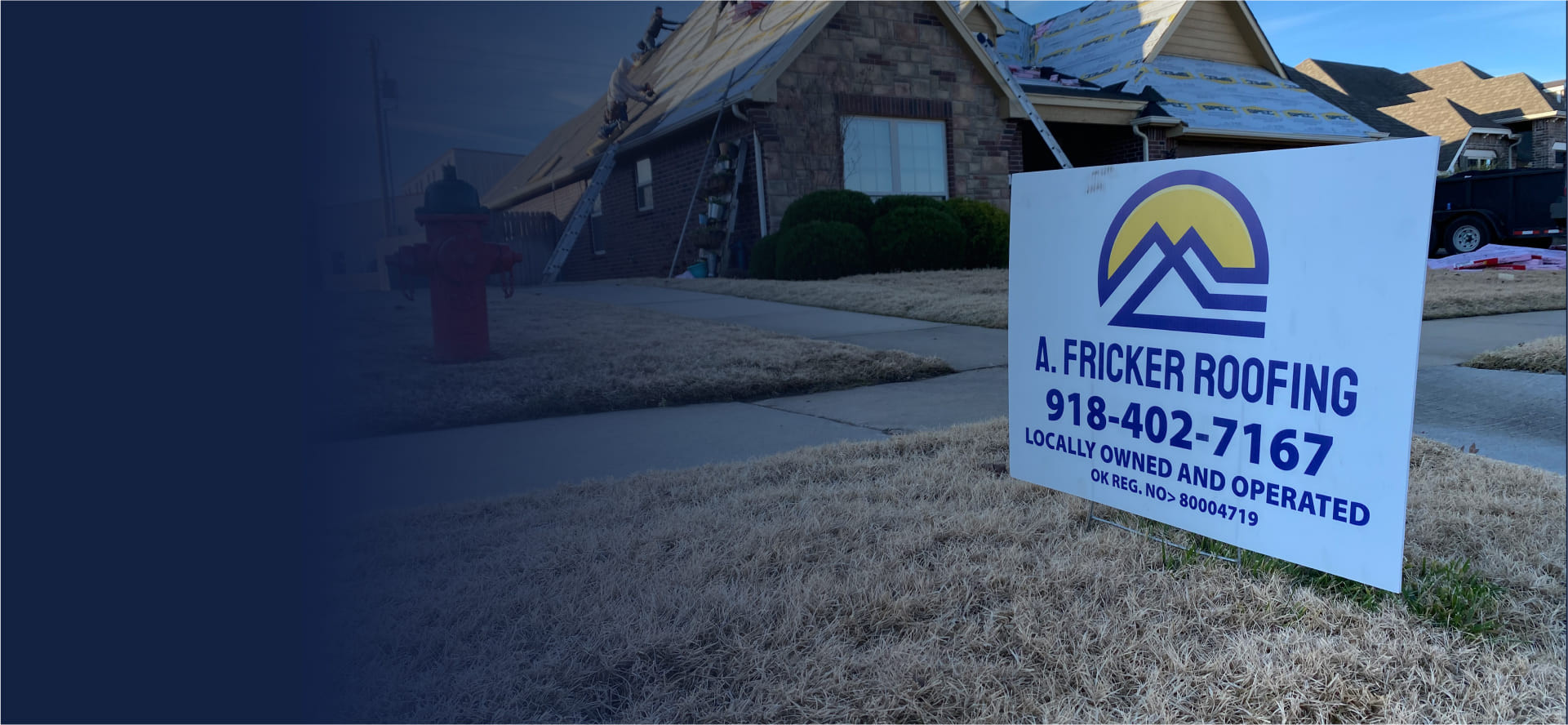Metal roofs are steadily becoming the first choice of many homeowners. This is because they tick all the important boxes that homeowners consider before replacing or installing a new roof; durability, energy efficiency, and aesthetic appeal.
When considering a metal roof installation, most homeowners think primarily about the visible panels that give a home its sleek, modern appearance. However, a metal roofing system is much more than just the panels you see. Beneath the surface, there are several key components that work together to provide durability, weather resistance, and long-term performance. Understanding these parts of the roof will help you make an informed decision when selecting and maintaining it.
In this blog post, we’ll look at the parts of a metal roof and what makes this system different from an asphalt shingle roof.
Key Components Of A Metal Roof: Decoding The Anatomy
#1 Roof Decking (Sheathing)
The foundation of any roofing system is the roof deck, which is also known as the roof sheathing. This is the base layer that supports the entire roofing structure, providing good structural support, and is made from durable materials like plywood or oriented strand board (OSB). It also helps distribute weight evenly.
Why It’s Important:
- Supports the entire roofing structure
- Provides a base for attaching underlayment and panels
- Helps distribute the weight of the roof evenly
#2 Underlayment
Directly on top of the roof deck is the underlayment. Think of this as the second layer of a metal roof. This is a critical layer that provides an additional barrier against moisture that can infiltrate beneath the roof panels. There are two primary types of underlayment used for a metal roof:
Synthetic Underlayment: A durable, water-resistant material that has widely replaced felt roofing underlayment. This underlayment is designed to provide superior protection against moisture and wind-driven rain.
Self-Adhering (Peel-and-Stick) Underlayment: A rubberized asphalt material that seals around nails and fasteners, making it ideal for preventing leaks in vulnerable areas like valleys and eaves.
Why It’s Important:
- Acts as a secondary moisture barrier
- Protects the deck from water damage
- Enhances the longevity of the roofing system
#3 Metal Roofing Panels
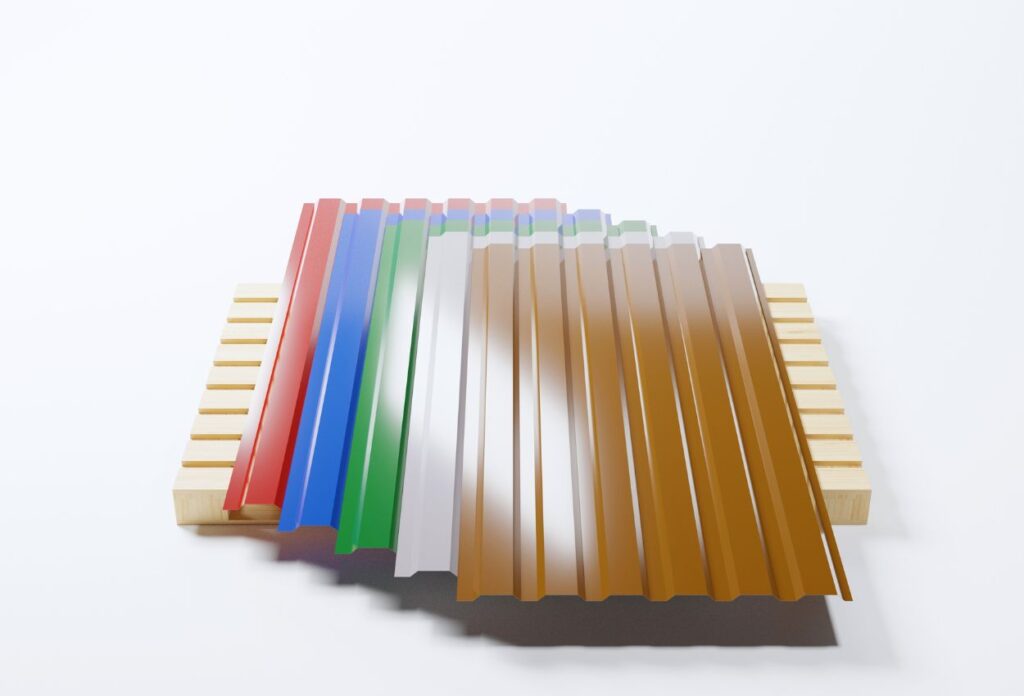
Now on to the most visible and defining component of a metal roof — the metal panels. While the previous two layers are pretty standard, this is where you have a chance to customize your roofing system. Metal panels come in different styles and materials, including steel, aluminum, copper, and zinc. Each material has its benefits in terms of durability, cost, and aesthetic appeal. Steel is the most inexpensive material while options like copper and zinc are premium materials.
If you want to know more about these materials, read our guide: Best Metal Roof Types For Residential Homes
Types Of Metal Roofing Panels
- Standing seam panels: These feature raised seams that interlock, offering superior weather resistance and creating a clean, modern aesthetic that appeals to contemporary architectural designs.
- Corrugated panels: With their distinctive wavy, ridged design, are commonly used for both residential and commercial applications, providing excellent water-shedding capabilities and versatile installation.
- Metal shingles: These are specifically designed to mimic the traditional look of asphalt shingles while offering the superior durability and longevity of metal roofing.
#4 Fasteners and Clips
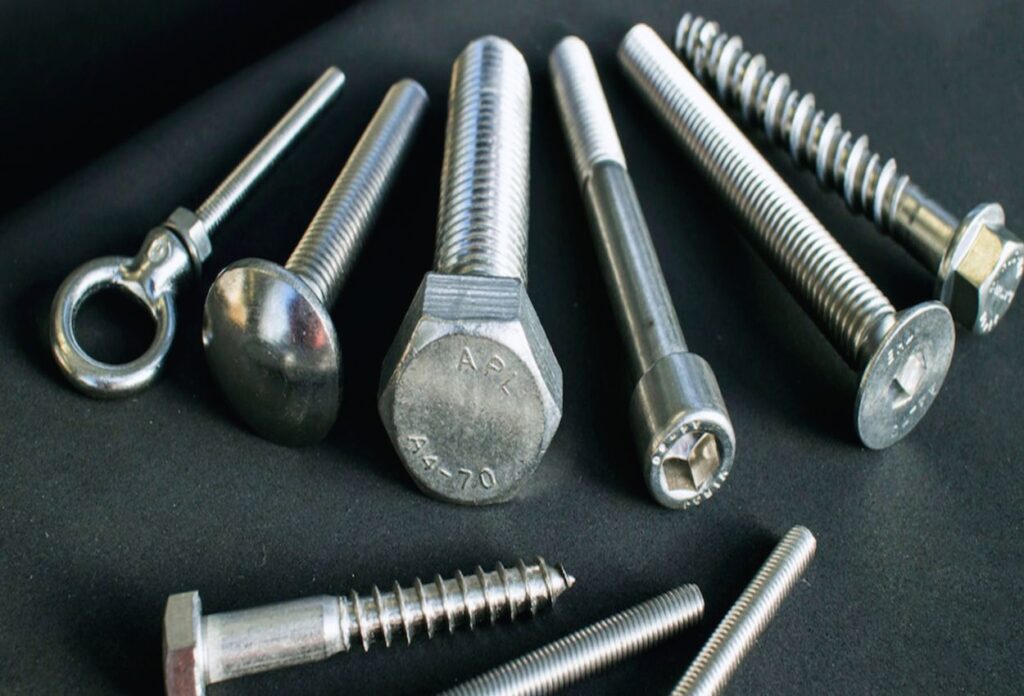
Fasteners and clips are crucial for securing metal panels to the roofing structure. The two most important types are exposed and hidden fastener systems, with each one used for a different type of roofing system. Exposed fasteners have screws with rubber gaskets that secure panels directly to the roof deck and are most commonly used for corrugated roofs.
On the other hand, concealed fasteners are more modern. These are hidden clips that allow panels to expand and contract with temperature changes, reducing the risk of leaks.
Why It’s Important:
- Ensures metal panels remain securely attached
- Prevents shifting due to wind and thermal expansion
- Reduces potential for water infiltration when properly installed
#5 Flashing
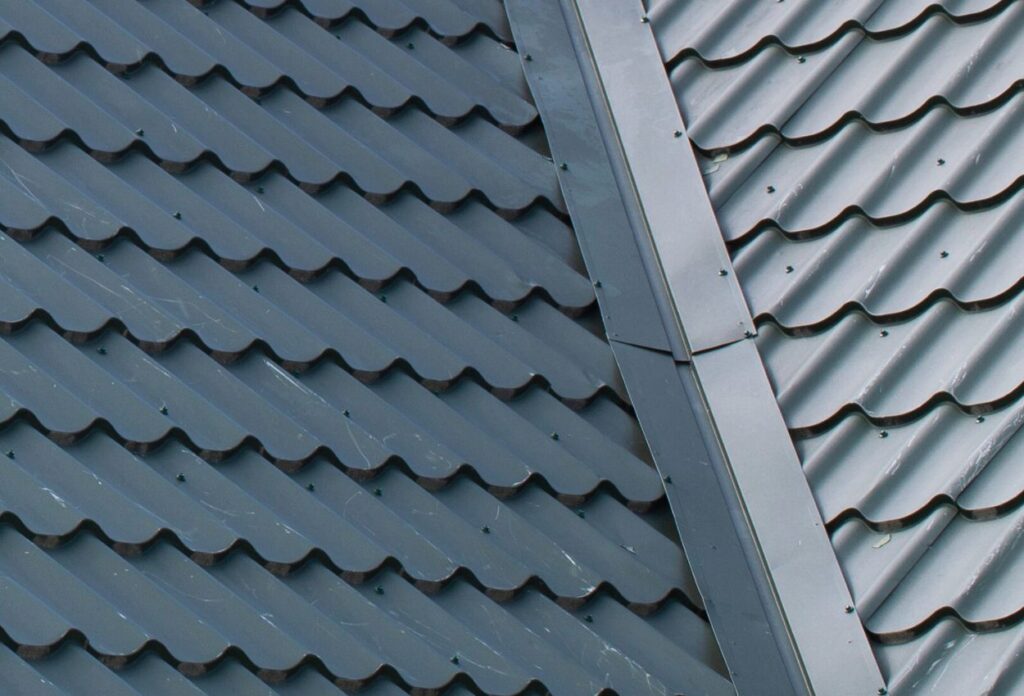
Flashing is a thin metal material used at different points on a roof to stop water from getting inside. In roof valleys, where two roof slopes meet, metal flashing helps direct water away from potential leak spots. Around features like chimneys and skylights, special flashing creates a tight seal to keep moisture out. Flashing also protects the edges of the roof, preventing water damage and helping the roof withstand strong winds.
Why It’s Important:
- Directs water away from vulnerable areas
- Reduces the risk of leaks
- Enhances the overall waterproofing of the roof
#6 Ridge Cap Metal
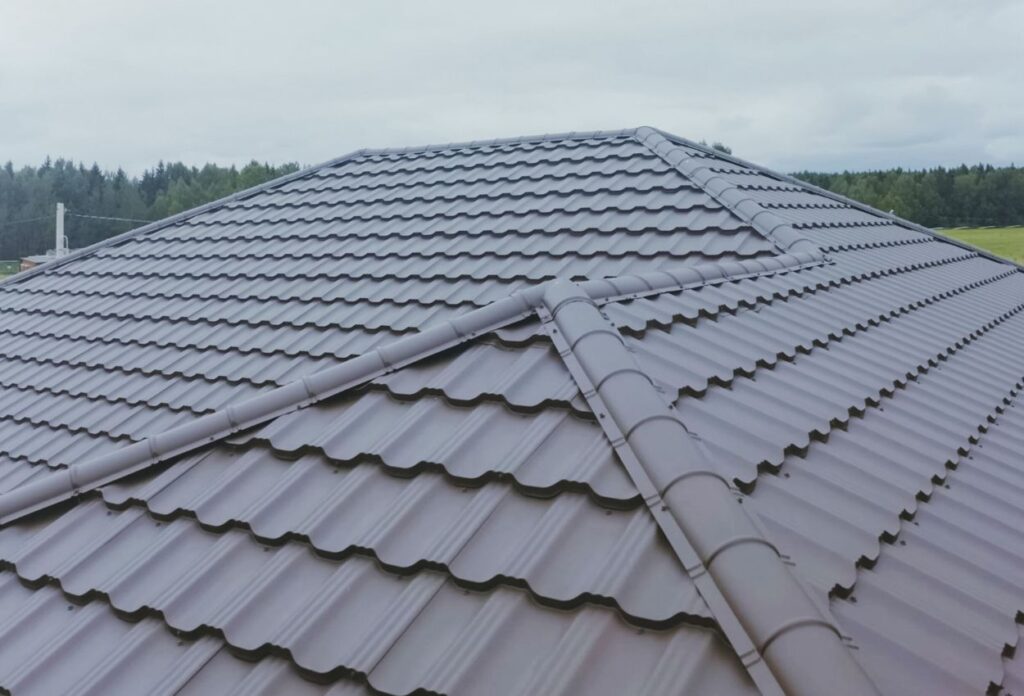
The ridge cap is a crucial component installed along the highest point where two roof slopes meet, serving multiple important functions. It acts as a protective barrier that covers the exposed panel edges at the roof’s peak, preventing water from penetrating the roofing system.
Ridge caps are typically made of metal that matches the roof’s panels, creating a seamless transition that not only enhances water resistance but also contributes to the roof’s overall aesthetic appeal.
Why It’s Important:
- Seals the roof peak for added waterproofing
- Allows for proper ventilation when designed as a vented ridge cap
- Completes the appearance of the roof
#7 Ventilation System
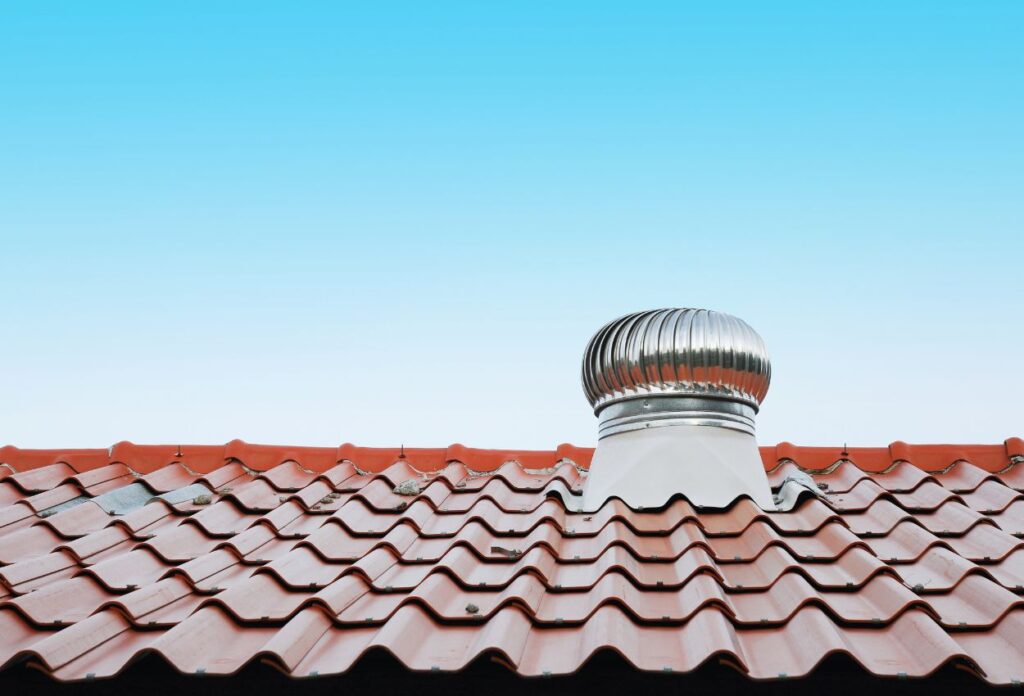
Apart from the layers that we talked about, there are other components that are quite important, such as roof vents. A properly ventilated metal roofing system includes ridge vents, soffit vents, or gable vents to allow air circulation. This prevents moisture buildup and helps regulate attic temperatures.
Why It’s Important:
- Reduces heat buildup in warmer months
- Prevents condensation and mold growth
- Enhances the efficiency of heating and cooling systems
#8 Drip Edge
A drip edge is a metal strip installed along the roof’s edges to direct water away from the fascia and into the gutters. Though a small part of your metal roof, it plays a big role as it helps prevent water from seeping under the roofing structure.
Why It’s Important:
- Prevents water damage to the fascia and soffit
- Enhances drainage and protects roof edges
- Extends the life of the roofing system
#9 Gutters and Downspouts
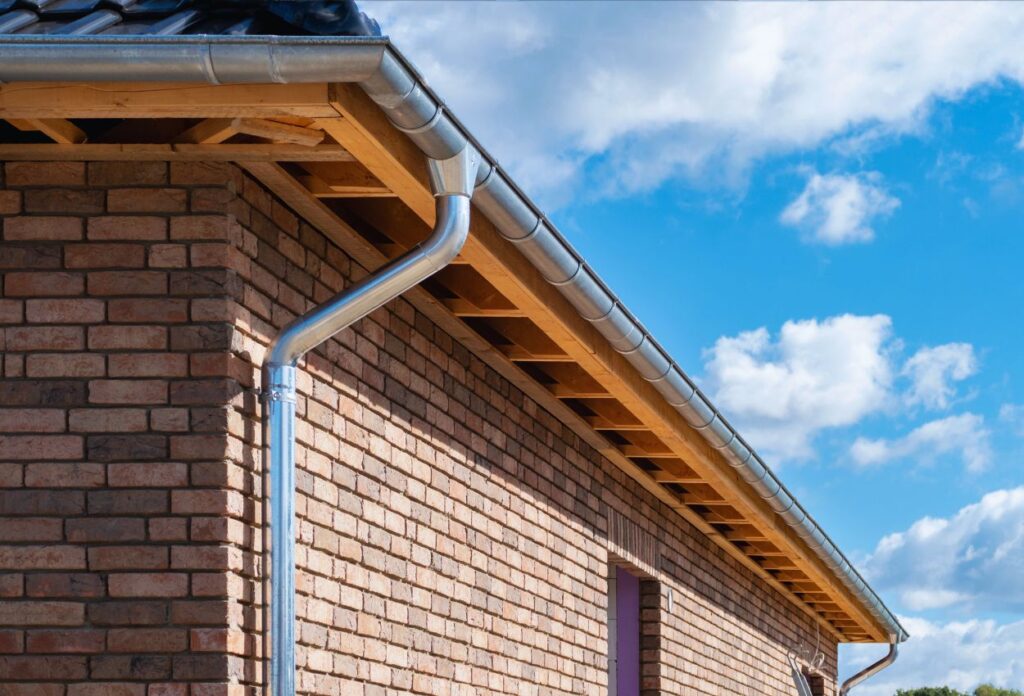
Gutters and downspouts work as a team to channel rainwater away from your home’s foundation. Properly installed gutters help prevent erosion, basement flooding, and exterior water damage.
Why It’s Important:
- Directs water away from the home’s foundation
- Reduces the risk of water damage to siding and landscaping
- Helps maintain the integrity of the roof
#10 Closure Strips
Last but not the least are closure strips. These are a type of foam or metal inserts used to seal gaps between metal panels and trim. They prevent pests, water, and debris from infiltrating the roof structure, ensuring better insulation and weather resistance.
Why It’s Important:
- Blocks pests and water infiltration
- Enhances insulation and energy efficiency
- Helps maintain a tight seal for long-term performance
Conclusion
A metal roofing system is a great choice for your new roof. However, its success depends on more than just the metal panels. Every part, from the underlayment to the ridge cap, plays a crucial role in protecting your home from the elements and ensuring the roof’s longevity.
At A. Fricker Roofing and Waterproofing, we specialize in installing and maintaining high-quality metal roofing systems tailored to your needs. Our expert team ensures every component is installed with precision and care, giving you a roof that lasts for decades. If you’re considering a metal roof, contact us today at (918) 402-7167 for a consultation, and let us guide you through the process with confidence!
FAQ’s
A. Leading metal roofing manufacturers include McElroy Metal, MBCI, and Sheffield Metals. These brands are known for their high-quality materials, comprehensive warranties, and extensive color options. However, the “best” brand depends on your specific needs, budget, and local climate conditions. It’s important to discuss options with a qualified local contractor who can recommend brands that perform well in Oklahoma.
A. Yes, underlayment is absolutely essential for metal roofs, even though metal panels are highly water-resistant. The underlayment acts as a crucial second line of defense against moisture infiltration, reduces noise, and helps prevent condensation. In Oklahoma’s climate, where sudden storms and temperature swings are common, a quality synthetic or self-adhering underlayment is particularly important for long-term roof protection.
